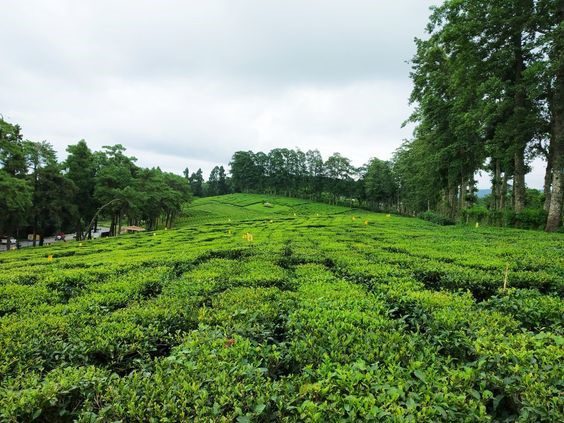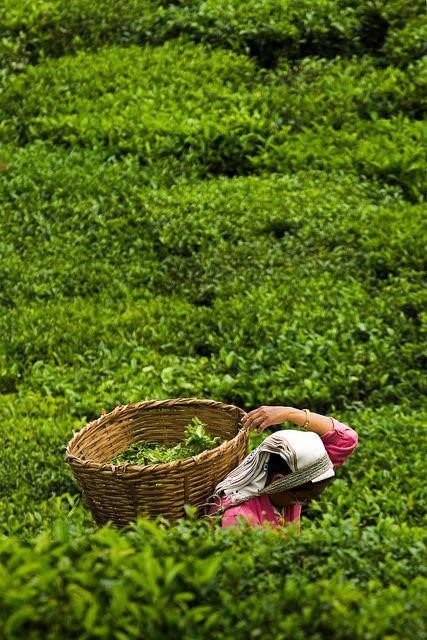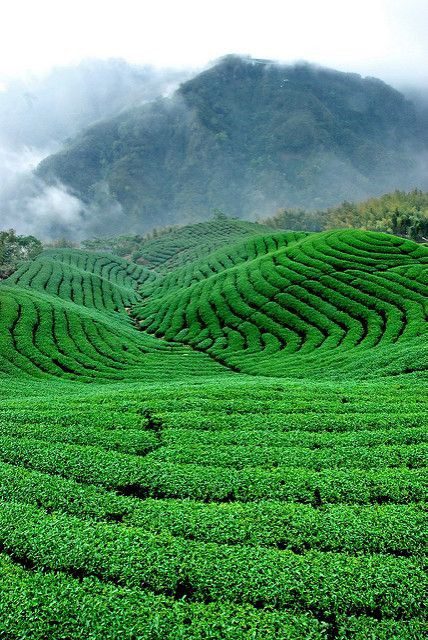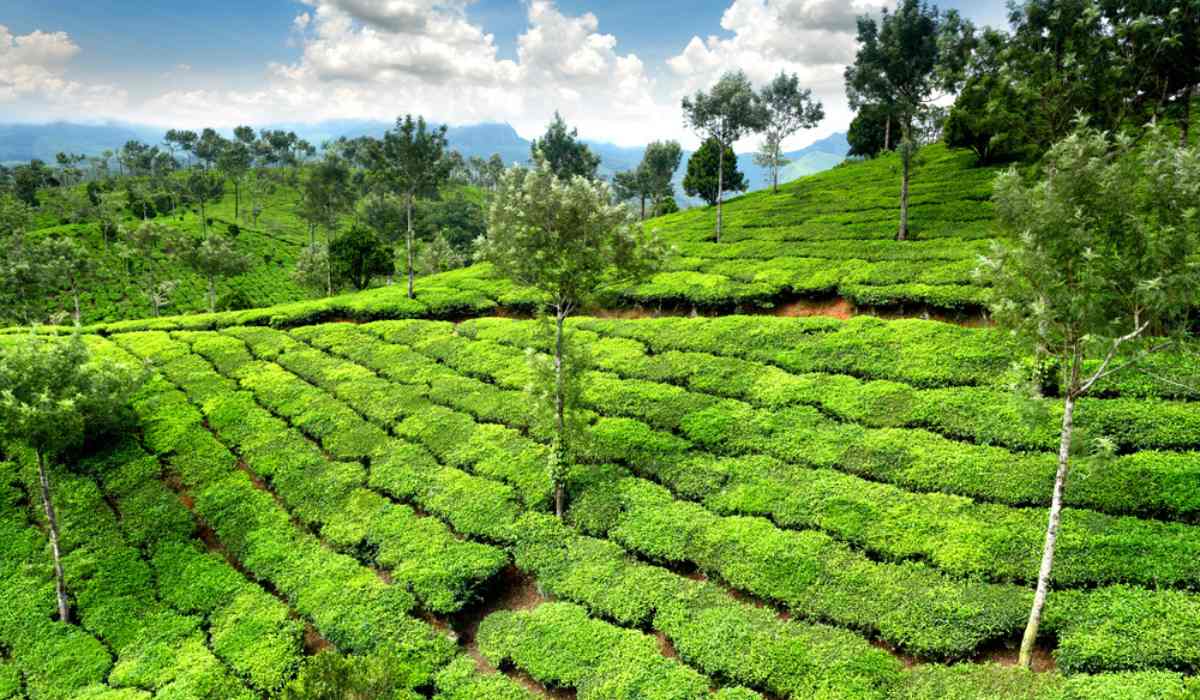Tea gardens, also known as tea plantations or estates, are agricultural landscapes dedicated to cultivating tea plants (Camellia sinensis). These play a vital role in the global tea industry, providing the raw material for one of the world’s most consumed beverages.

Source: Pinterest
See also: Herb Garden: Facts, benefits, main plants, growing and caring tips
Tea Gardens: History and cultural significance
The history of tea gardens dates back to 2, 000 BCE in ancient China. It was initially consumed for its medicinal properties. Tea became integral to Chinese culture during the Tang dynasty and from there on spread to neighbouring countries.
The cultivation of tea gardens expanded with the global trade growth, particularly during the British Empire’s expansion. British colonists established tea plantations in India, Sri Lanka and other regions, shaping the modern tea industry.
Gradually, tea gardens have become cultural landmarks in various countries, representing traditions, customs and national identities. They are often associated with tea ceremonies, which symbolise hospitality, respect and social connections. The cultural significance of tea gardens can be observed in countries like Japan, with its intricate tea ceremonies and the British fondness for afternoon tea.

Source: Pinterest
Tea Gardens: Location and climate
Tea gardens thrive in diverse geographical regions, each contributing to the uniqueness of the tea produced.
- Assam, India: Known for robust and malty black teas.
- Darjeeling, India: It is renowned for its prized and delicate black teas, often called the Champagne of teas.
- Uji, Japan: Produces high-quality green teas, including matcha.
- Anhui, China: Home to Keemun black tea, known for its complex flavours.
- Nuwara Eliya, Sri Lanka: Produces high-grown teas with a bright and delicate character.
Climate requirements for tea cultivation
Tea plants grow in regions with specific climatic conditions. Generally, they prefer:
Temperature: The tea plants flourish in regions with average annual temperatures ranging between 50°F (10°C) and 86°F (30°C).
Rainfall: Adequate rainfall is crucial, averaging 40 to 100 inches (100 to 250 cm) annually.
Altitude: Altitude influences the flavour of tea and quality, with higher elevations often producing tea with more delicate flavours.
Sunlight: The tea plants require a balance of sunlight and shade. Partial shade helps to protect the delicate leaves.
Tea Gardens: Popular tea varieties grown
The tea gardens cultivate various tea varieties, each offering distinct flavours and characteristics. Some popular tea varieties include:
- Black Tea: Known for its robust flavour and bold aroma, it undergoes full oxidation.
- Green Tea: With minimal oxidation, the green tea retains a fresh and grassy flavour, rich in antioxidants.
- Oolong Tea: Partially oxidised, the oolong tea falls between black and green teas, offering a range of flavours.
- White Tea: The least processed type of tea, the white tea features delicate flavours and a subtle aroma.
- Herbal Tea: While not derived from the Camellia sinensis plant, the herbal teas are popular infusions made from herbs, fruits, flowers and spices.
Tea Garden: Planting and cultivation techniques
Propagation: The tea plants are propagated through seeds or cuttings, carefully selected for desirable traits.
Pruning: Regular pruning promotes healthy growth, controls plant size and enhances plucking efficiency.
Soil management: The tea plants thrive in well-drained, acidic soils rich in organic matter, often supplemented with fertilisers.
Pest and disease control: Integrated pest management techniques minimise the use of pesticides, ensuring sustainable cultivation.
Harvesting and processing methods
Harvesting and processing techniques significantly impact the flavour and quality of the final tea product:
Plucking: Skilled workers selectively pluck young, tender leaves and buds by often using hand-picking methods.
Withering: Leaves are spread out to wilt, reducing moisture content and preparing them for subsequent processing steps.
Oxidation: For black and oolong teas, leaves are bruised or crushed to initiate oxidation, while green and white teas undergo minimal oxidation or are non-oxidised.
Drying: Leaves are dried through various methods such as pan-firing, steaming or oven-drying to halt oxidation and preserve flavours.
Tea Garden: Tourism
Tea garden tourism has gained popularity as a unique and immersive travel experience. Visitors can witness the tea-making process, explore picturesque landscapes, and engage with the local tea culture.
Tea garden tourism offers a range of activities including:
Tea tasting: Visitors can savour a variety of teas and learn about their flavours and characteristics through guided tastings.
Tea plucking: Some tea gardens allow tourists to participate in tea plucking activities, providing hands-on experiences.
Tea workshops: Interactive workshops teach visitors about tea brewing techniques, blending, and the art of tea appreciation.
Nature walks: Guided tours through tea gardens showcase the lush landscapes and provide insights into the surrounding biodiversity.

Source: Pinterest
Tea Gardens: Challenges and future
Climate change poses significant challenges to tea gardens worldwide:
Shifting weather patterns: Erratic rainfall and temperature fluctuations disrupt tea growth cycles and affect flavour profiles.
Increased pests and diseases: Warmer temperatures create a more favourable environment for pests and diseases, leading to higher susceptibility in tea plants.
Altered altitude suitability: Rising temperatures may render current tea-growing regions unsuitable, necessitating shifts to higher altitudes.
Pests and diseases affecting tea plants
Tea Mosquito Bug: Feeds on tender tea shoots, causing severe damage and affecting tea quality.
Tea Green Leafhopper: Transmits viruses to tea plants, leading to stunted growth and reduced yields.
Tea Red Spider Mite: Sucks sap from tea leaves, resulting in discolouration and reduced photosynthesis.
Fungal diseases: Common fungal diseases include blister blight, grey blight, and root rot, which can cause leaf loss and plant death.
Innovations and technologies for sustainable tea production
Climate-smart agriculture: Adopting climate-smart agricultural practices can help mitigate the effects of climate change, such as implementing water-efficient irrigation and shade management techniques.
Integrated pest management: Integrated approaches combining biological control methods, resistant cultivars and reduced pesticide use can minimise pest damage.
Research and development: Ongoing research focuses on breeding tea plant varieties with enhanced resilience to pests, diseases and changing climate conditions.
Sustainable certifications: Certifications like fairtrade and Rainforest Alliance promote sustainable practices, ensuring better livelihoods for tea workers and environmental conservation.
FAQs
What are the popular tea varieties grown in tea gardens?
Tea gardens cultivate various tea varieties, including black tea, green tea, oolong tea, white tea and herbal tea. Each variety offers distinct flavours and characteristics.
What are the planting and cultivation techniques used in tea gardens?
Tea gardens employ propagation through seeds or cuttings, regular pruning, soil management and integrated pest and disease control to ensure healthy plant growth and maximise tea quality.
What is tea garden tourism?
Tea garden tourism is a growing trend that offers visitors an immersive travel experience. It allows them to witness the tea-making process, explore picturesque landscapes, and engage with local tea culture. Activities include tea tasting, plucking, tea workshops and nature walks.
What nutritional properties and antioxidants are found in tea?
Tea contains beneficial compounds such as caffeine, polyphenols (antioxidants), epigallocatechin gallate (EGCG), vitamins (e.g., vitamin C), and minerals (e.g., potassium and manganese).
What challenges do tea gardens face, and what does the future hold?
Tea gardens face challenges due to climate change, including shifting weather patterns, increased pests and diseases and altered altitude suitability. However, innovative solutions such as climate-smart agriculture, integrated pest management, research and development and sustainable certifications are being explored to ensure a sustainable future for tea gardens.
| Got any questions or point of view on our article? We would love to hear from you. Write to our Editor-in-Chief Jhumur Ghosh at jhumur.ghosh1@housing.com |






